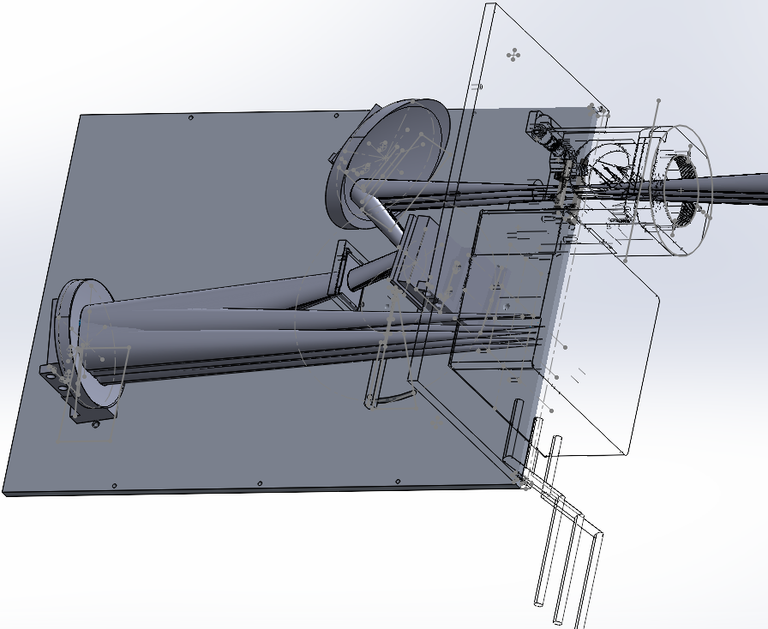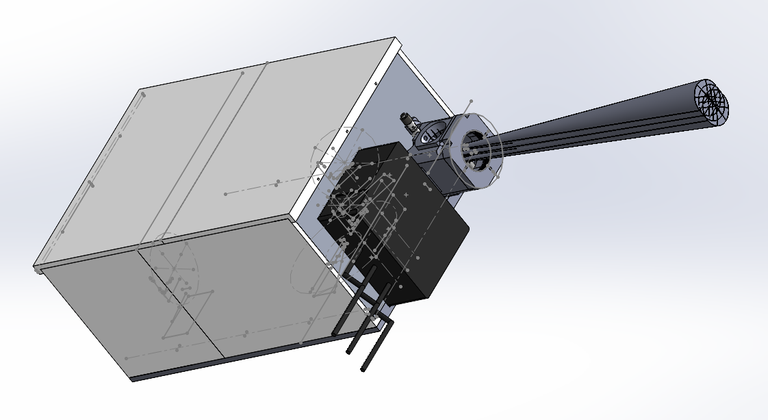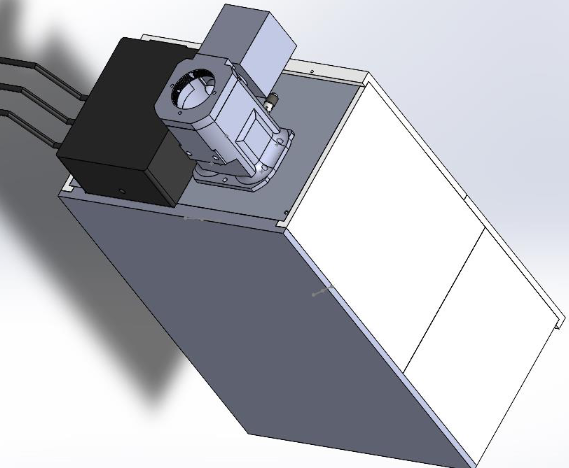Offner Relay Spectrograph

Undergraduate project: Evan Batteas
Spectrographs are a key instrument in astronomical observation. Analyzing the spectra produced by spectrographs can tell us the elemental composition and radial velocity of astronomical targets, which can inform how old an object is, how far away it is, and if an exo-planet could host life.
This long slit spectrograph is designed and assembled utilizing an asymmetric Offner relay. Due to the asymmetry of the Offner relay, an accessible pupil is formed, where a grating is placed to disperse the light. This instrument is designed to utilize 3D-printing and commercially available parts in its construction and is designed for mounting on a C14 Celestron telescope.
When this project is complete, it will be tested and used at the Texas A&M Teaching Observatory on the C14 Celestron telescope.
Concept
Inside instruments, light must reach the detector with as little deformation as possible. One of the ways to do this is with an optical system know as an Offner relay. The Offner relay makes use of the characteristics of spherical mirrors to transport the light with minimal aberrations. Generally, an Offner relay consists of two spherical mirrors, one convex and one concave, with the radius of curvature of the concave one being twice that of the convex. A typical Offner relay is depicted below (diagram A). However, Offner relays can also be asymmetric (diagram B), a fact which was recently noted.
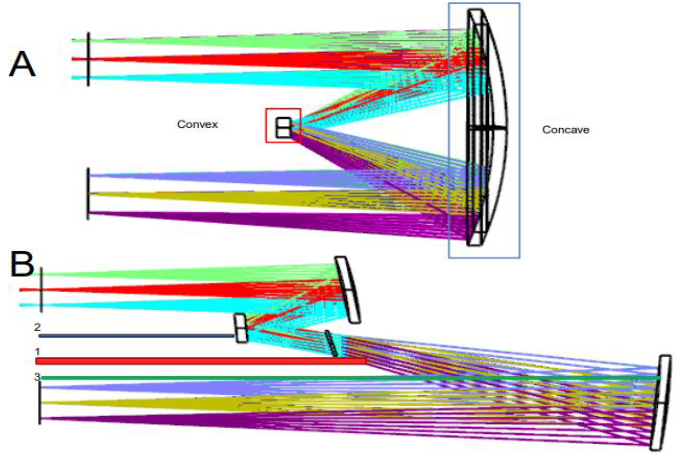
B: An asymmetric Offner relay. The RoC of the third mirror is determined by the RoC of the first two mirrors in the relay, by the equation r3 = r1r2/(r1 –r2)1
The benefit of an asymmetric Offner relay is that an accessible pupil is formed while maintaining all other properties of a normal Offner relay. An accessible pupil is a place where all the light in a system passes through only once. This is useful as it allows us to place something like a filter or grating in the pupil.
Design
A program was written to scrape all possible mirror combinations from online retailers and choose a combination that would work for an asymmetric Offner relay. The relay was modeled in Zemax Optic Studio, customized for a Celestron C14, and outfitted with a grating in the accessible pupil. The Zemax model was imported into SolidWorks. Mounts available from online retailers were sourced, but for the design process, mounts that were already on-hand were used.
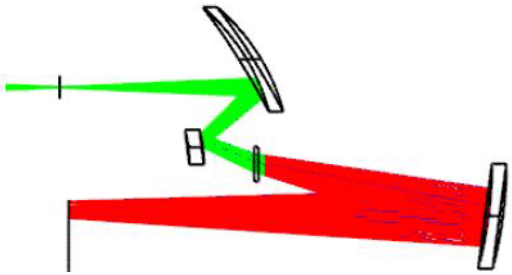
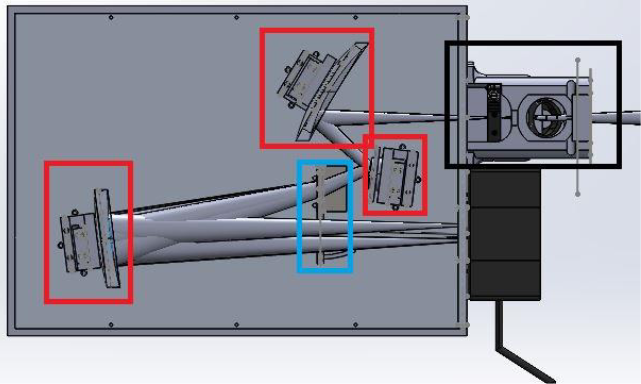
The optics sit on a baseplate which is designed to precisely locate each piece and is machined out of aluminum. It is enclosed by an easily assembled case, designed to be similar to a computer case, which is 3D-printed and screwed together.
Current Status
The guide camera housing is complete, containing a slit, beamsplitter, camera, and a threaded interface for a C14 telescope. The interface is machined from aluminum, and the main housing is 3D-printed with polyethylene terephthalate glycol (PETG).
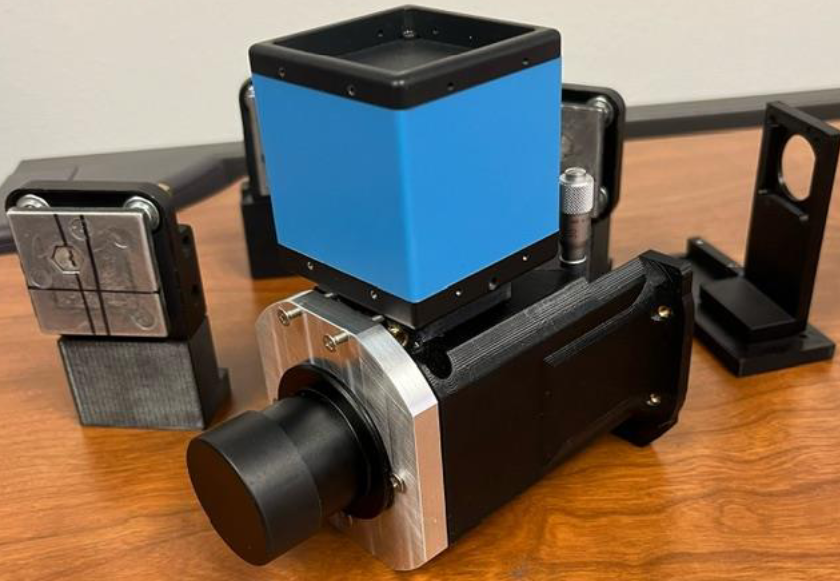
The other major sections to be completed are the case (including base plate, front plate, and 3d printed enclosure) and the optics (the mirrors, mirror mounts, and grating mount).
An room temperature vulcanizing (RTV) silicone adhesive is used to adhere the mirrors to the mounts. A point source microscope (PSM) is used to ensure the mirrors are at the same height on each mount. A PSM is an instrument which allows opto-mechanical assemblies to be aligned precisely by referencing both mechanical and optical reference points.

Publications
Long Slit Spectrograph using an Asymmetric Offner Relay, Evan J. Batteas, Luke M. Schmidt, Darren L. DePoy, 2024 AggieSTAAR and Texas A&M LAUNCH poster session
Long Slit Spectrograph using Asymmetric Offner, Evan Batteas, Luke M. Schmidt, D.L. DePoy, 2023 AggieSTAAR and Texas A&M LAUNCH poster session

